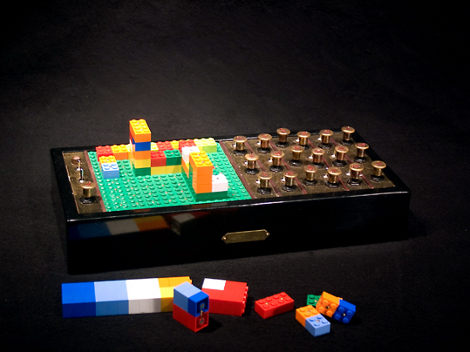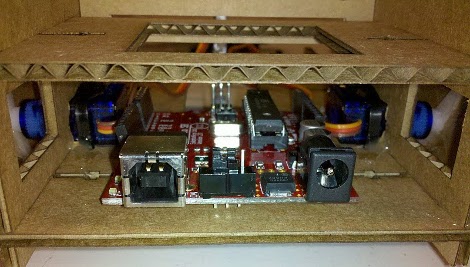
[Yoshi Akai] built a sequencer that is part steampunk, part injection molded plastic. The LEGO sequencer MR II has eight steps in a loop that is manipulated by adding the colorful blocks to a green base plate. Each color corresponds to one particular sound which can be modified by building skyward. On the other side of things he’s added a beautifully crafted control area for knobs and switches. We didn’t see much info about what is inside the device so, watch the clip after the break and then feel free to start the speculation in the comments.
This is a similar concept to the coin sequencer. From the picture above it seems the blocks have been altered and perhaps use light to identify the different blocks.














